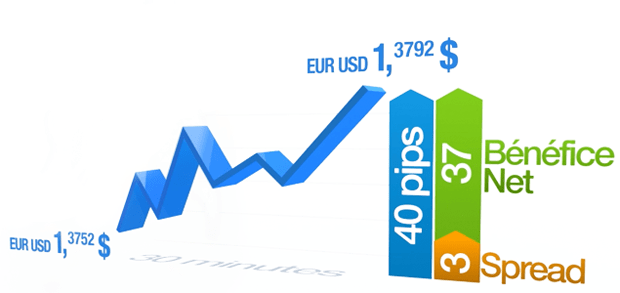
If you want to get involved in the stock market, but don't know where to start, you might be wondering how do I open a brokerage account. This article will help you navigate the process from choosing a broker to funding your account. Once you have opened an account you can make your first trades, and you can begin making money. There are many funding options available if your account is not funded.
Selecting a broker provider
The selection of a brokerage account provider is not easy. There are three options for brokers: traditional brokers, robo-advisors, and online brokers. Each one has its pros and cons, but the most important thing to remember is their fees. A robo-advisor is a great option for managing their investments. Some people may find this less convenient, but it can also provide them with greater independence.

Opening a brokerage accounts costs
In order to set up a brokerage account you will need to provide information about your investment goals as well as your tolerance for risk. The terms may differ from one firm to another, but the most common goals are income, growth and capital preservation. Other common goals include growth that is moderately aggressive and speculation. Before you choose an investment account, consider the fees and timeframe required to achieve these goals. Consider how you will manage your cash, and how you plan to access it. These decisions will impact the type of account that you open.
A brokerage account is a type investment account that allows investors purchase and sell stocks and bonds, mutual fund, and other options. The funds are placed in an account at the brokerage company, where you have full access to your funds whenever it is convenient for you. However, remember that if you make a profit from your investments, you may owe taxes. You may be charged high fees to open a brokerage account. Do your research before you make a decision.
Funding a brokerage account
The easiest way to fund your brokerage account is to connect your bank account online and the brokerage firm. This process should go smoothly and be as painless as possible. Do your research on the brokerage firm before you fund the account. Also, learn about how they process payments. There are many options available for this type transaction. Make sure you choose the right one. These tips will help you make this process as simple as possible. These steps will help you fund your brokerage account.

The most common error savers make when it is time to fund a brokerage account: relying on retirement accounts to finance their investments. While this strategy may work in the short run, it may not be the best route to take. Instead of saving them in a low-yielding savings fund, use your brokerage account to invest surplus cash flows. Inflation takes away cash and can produce negative returns. Avoid keeping short-term or emergency funds in your brokerage account.
FAQ
How are share prices set?
Investors decide the share price. They are looking to return their investment. They want to earn money for the company. They buy shares at a fixed price. The investor will make more profit if shares go up. If the share price falls, then the investor loses money.
Investors are motivated to make as much as possible. This is why investors invest in businesses. It allows them to make a lot.
What is a REIT and what are its benefits?
A real estate investment trust (REIT) is an entity that owns income-producing properties such as apartment buildings, shopping centers, office buildings, hotels, industrial parks, etc. These publicly traded companies pay dividends rather than paying corporate taxes.
They are very similar to corporations, except they own property and not produce goods.
How do I choose an investment company that is good?
A good investment manager will offer competitive fees, top-quality management and a diverse portfolio. Commonly, fees are charged depending on the security that you hold in your account. While some companies do not charge any fees for cash holding, others charge a flat fee per annum regardless of how much you deposit. Others charge a percentage on your total assets.
Also, find out about their past performance records. Companies with poor performance records might not be right for you. Avoid companies that have low net asset valuation (NAV) or high volatility NAVs.
It is also important to examine their investment philosophy. A company that invests in high-return investments should be open to taking risks. If they aren't willing to take risk, they may not meet your expectations.
What are the benefits to owning stocks
Stocks can be more volatile than bonds. The stock market will suffer if a company goes bust.
However, share prices will rise if a company is growing.
To raise capital, companies often issue new shares. This allows investors to buy more shares in the company.
Companies borrow money using debt finance. This allows them to get cheap credit that will allow them to grow faster.
People will purchase a product that is good if it's a quality product. Stock prices rise with increased demand.
The stock price should increase as long the company produces the products people want.
What is the trading of securities?
Stock market: Investors buy shares of companies to make money. Companies issue shares to raise capital by selling them to investors. Investors can then sell these shares back at the company if they feel the company is worth something.
Supply and demand determine the price stocks trade on open markets. When there are fewer buyers than sellers, the price goes up; when there are more buyers than sellers, the prices go down.
There are two ways to trade stocks.
-
Directly from the company
-
Through a broker
Statistics
- Ratchet down that 10% if you don't yet have a healthy emergency fund and 10% to 15% of your income funneled into a retirement savings account. (nerdwallet.com)
- Even if you find talent for trading stocks, allocating more than 10% of your portfolio to an individual stock can expose your savings to too much volatility. (nerdwallet.com)
- Individuals with very limited financial experience are either terrified by horror stories of average investors losing 50% of their portfolio value or are beguiled by "hot tips" that bear the promise of huge rewards but seldom pay off. (investopedia.com)
- The S&P 500 has grown about 10.5% per year since its establishment in the 1920s. (investopedia.com)
External Links
How To
How to invest in the stock market online
Stock investing is one way to make money on the stock market. There are many ways you can invest in stock markets, including mutual funds and exchange-traded fonds (ETFs), as well as hedge funds. The best investment strategy is dependent on your personal investment style and risk tolerance.
First, you need to understand how the stock exchange works in order to succeed. This involves understanding the various types of investments, their risks, and the potential rewards. Once you have a clear understanding of what you want from your investment portfolio you can begin to look at the best type of investment for you.
There are three main types of investments: equity and fixed income. Equity is ownership shares in companies. Fixed income refers to debt instruments such as bonds and treasury notes. Alternatives include commodities like currencies, real-estate, private equity, venture capital, and commodities. Each category has its own pros and cons, so it's up to you to decide which one is right for you.
You have two options once you decide what type of investment is right for you. One strategy is called "buy-and-hold." You purchase a portion of the security and don't let go until you die or retire. Diversification, on the other hand, involves diversifying your portfolio by buying securities of different classes. By buying 10% of Apple, Microsoft, or General Motors you could diversify into different industries. Multiplying your investments will give you more exposure to many sectors of the economy. You can protect yourself against losses in one sector by still owning something in the other sector.
Another important aspect of investing is risk management. You can control the volatility of your portfolio through risk management. If you were only willing to take on a 1% risk, you could choose a low-risk fund. A higher-risk fund could be chosen if you're willing to accept a risk of 5%.
The final step in becoming a successful investor is learning how to manage your money. Managing your money means having a plan for where you want to go financially in the future. Your short-term, medium-term, and long-term goals should all be covered in a good plan. That plan must be followed! Don't get distracted with market fluctuations. Stay true to your plan, and your wealth will grow.